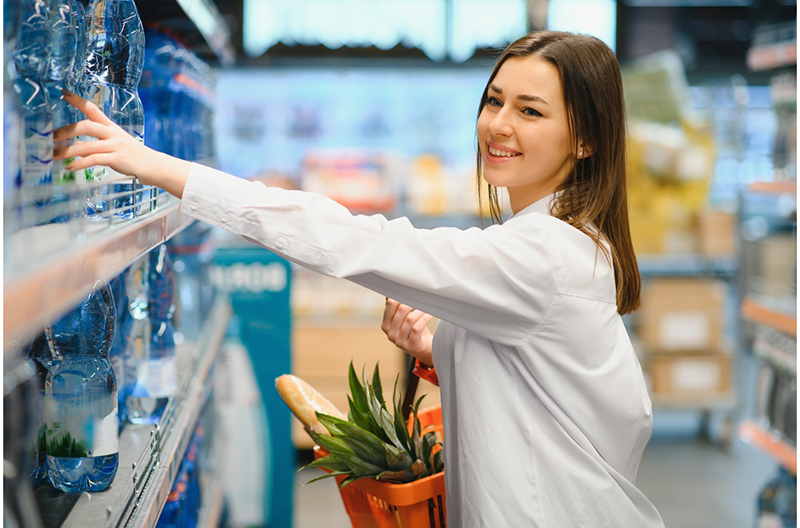Bottled water made history in 2021 by becoming the largest beverage category (by volume), according to new data from the Beverage Marketing Corporation (BMC). Bottled water’s total volume in 2021, 15.7 billion gallons, surpassed carbonated soft drinks’ all-time peak of 15.3 billion gallons, which was reached in 2004.
Bottled water outsold soft drinks for the first time in 2016, and has done so every year since. This consumption shift highlights consumers’ preference for healthy hydration. Americans consumed 15.7 billion gallons of bottled water in 2021, up 4.7 percent from the previous year.
A significant portion of bottled water’s growth (30 percent since 2012) has come from people switching to bottled water from other less-healthy packaged drinks. And nine out of 10 Americans (91 percent) want bottled water to be available wherever other drinks are sold, according to a survey conducted on behalf of the International Bottled Water Association (IBWA) by The Harris Poll.
“Upward movement in per capita consumption indicates clear, persisting demand for a product that consumers see as a healthy alternative to other beverages,” said Michael C. Bellas, BMC chairman and CEO.
“Bottled water’s freedom from calories and artificial ingredients appeals to many consumers. Bottled water achieved its position at the apex of beverage rankings by enticing consumers away from other packaged beverages. Some consumers may have transitioned away from regular, full-calorie beverages in favor of their diet versions, but many others opted for bottled water instead. As some consumers became wary of artificial sweeteners, they shifted away from diet beverages as well as regular counterparts.”
Soda containers, on average, use 188 percent more PET plastic than bottled water containers. Soft drinks and other sugary beverages need thicker plastic containers due to their carbonation and bottling processes. Even with continuing growth and increased consumption, bottled water still has the smallest water and energy use footprint of any packaged beverage.
Most bottled water is packaged in 100 percent recyclable PET No. 1 plastic and HDPE No. 2 plastic. PET containers are the most recognized by consumers as being recyclable and is likely why they are the most recycled containers in curbside recycling programs in the U.S.
Its recyclability distinguishes it from other common plastic products that are truly “single-use,” such as non-recyclable plastic items (e.g., straws, cutlery, and plates); food and goods packaging (e.g., film, heat-sealed and multi-layered laminate bags) and containers (e.g., non-PET, HDPE, and PC bottles and tubs).
Among all the items that get placed in recycle bins or taken to drop-off centers, an estimated 99 percent of all PET plastic bottles get recycled. The reason is because post-consumer PET and HDPE plastic is in huge demand by industries because they want to use that recycled plastic to make more products. Many bottled water companies use recycled PET and HDPE plastic to create new bottles, which reduces the need for virgin plastic.
For more information, visit beveragemarketing.com or bottledwater.org.

